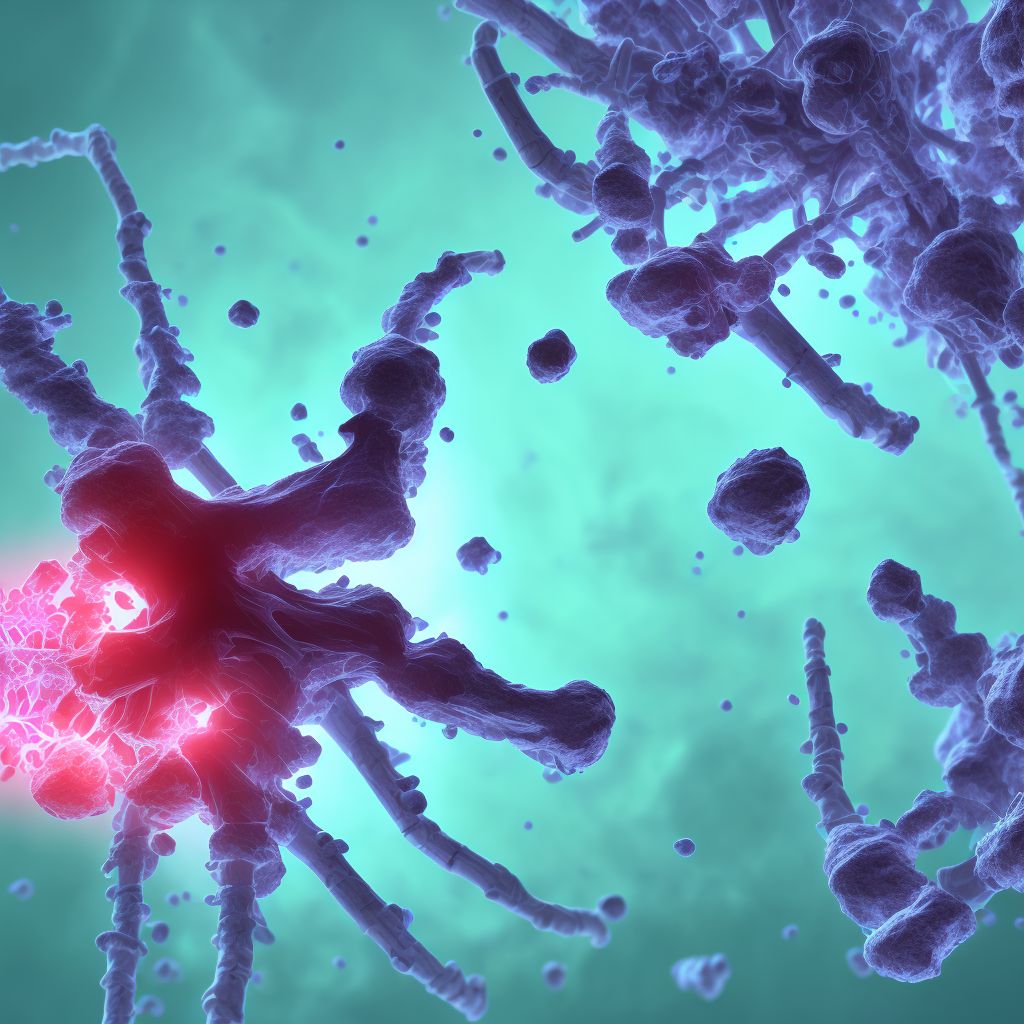
Nondisplaced fracture of medial condyle of right tibia, subsequent encounter for closed fracture with nonunion Save
ICD-10 code: S82.134K
Disease category: S82.134: Nondisplaced fracture of medial condyle of right tibia
Nondisplaced Fracture of Medial Condyle of Right Tibia: Understanding the Condition
A nondisplaced fracture of the medial condyle of the right tibia, subsequent encounter for closed fracture with nonunion, is a specific type of fracture that occurs in the lower leg bone. This condition, also known as a broken bone, can be a result of trauma or excessive stress on the bone.
When the fracture is nondisplaced, it means that the bone has cracked or broken, but the pieces have not shifted out of their normal position. This type of fracture is less severe compared to displaced fractures, as the bone remains aligned.
Nonunion refers to a complication that can arise when the fractured bone fails to heal properly. In this case, the healing process does not progress as expected, resulting in persistent pain and limited mobility.
- Symptoms: Patients with a nondisplaced fracture of the medial condyle of the right tibia may experience pain, swelling, and tenderness in the affected area. They may also have difficulty walking or putting weight on the leg.
- Diagnosis: To diagnose this condition, a healthcare professional will perform a thorough physical examination and may order imaging tests such as X-rays or CT scans. These tests help to visualize the fracture and assess the alignment of the bone.
- Treatment: Although we will not cover treatment in this article, it is worth noting that the approach to treating a nondisplaced fracture with nonunion may vary depending on the individual patient and the specific circumstances of the fracture.
It is crucial to seek medical attention promptly if you suspect a fracture or experience persistent pain after an injury. Timely diagnosis and appropriate treatment can help prevent complications and promote proper healing.
In conclusion, a nondisplaced fracture of the medial condyle of the right tibia, subsequent encounter for closed fracture with nonunion, is a condition that requires medical attention. Understanding the symptoms and seeking proper diagnosis are essential steps toward effective management and recovery. Remember, always consult with a healthcare professional for an accurate diagnosis and appropriate treatment plan.
Treatment of Nondisplaced fracture of medial condyle of right tibia, subsequent encounter for closed fracture with nonunion:
Treatment Options for Nondisplaced Fracture of Medial Condyle of Right Tibia
A nondisplaced fracture of the medial condyle of the right tibia is a type of bone injury that occurs when there is a crack or break in the lower part of the leg bone, specifically the inner side of the knee joint. This can lead to pain, swelling, and difficulty in bearing weight on the affected leg.
...To see full information about treatment please Sign up or Log in